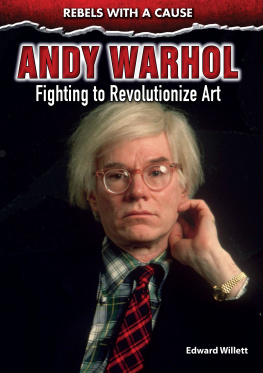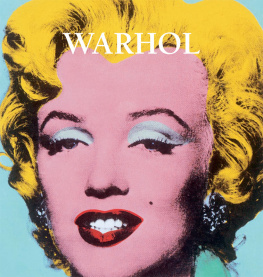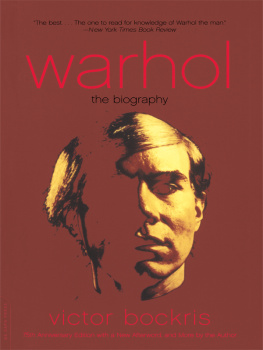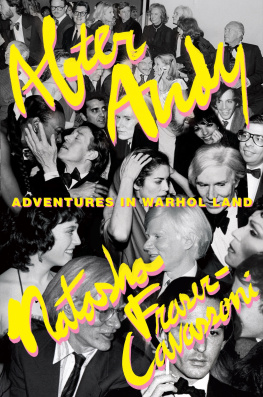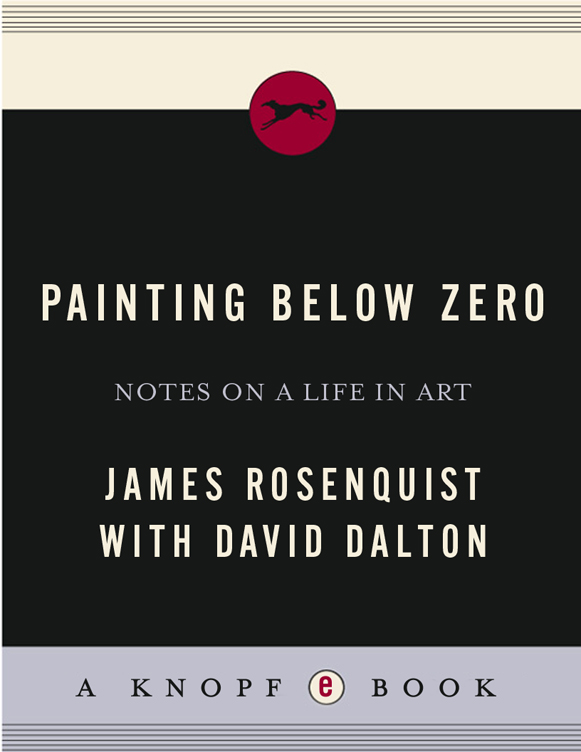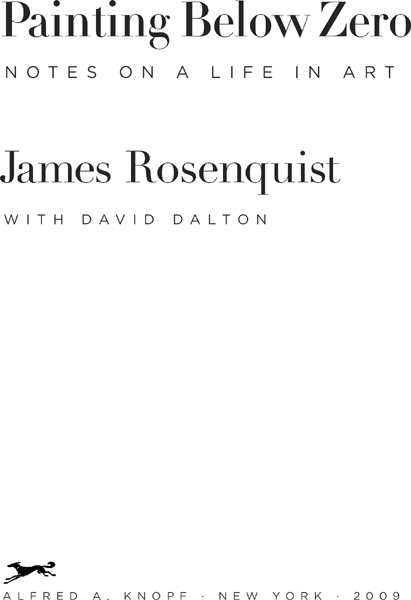ACKNOWLEDGMENTS
T here are many people who make what I do possible. I wouldnt be able to build my canvases without the ingenious mechanical help of my amazing crew: Dan Campbell and Kevin Hemstreet.
At the nerve center of my studio in Aripeka are Beverly Coe, my secretary of twenty-three years who keeps everything afloat (including our spirits), and the radiant Charlotte Lee, who presides over truant documents and files. I am grateful to my resourceful archivist, Michael Harrigan, for his meticulous organizational skills andon this manuscripthis corrections and suggestions; to Mary Lou Rosenquist and Susan Hall for sharing their memories; to Sarah Bancroft for her invaluable assistance; to Hannah Williams for transcribing tapes made under trying conditions, and to Coco Pekelis Dalton for casting her eagle eye over the manuscript.
I owe enormous thanks to my brilliant dealer, Bill Acquavella, for his astute eye and great care, and also to his children at the galleryNick, Alex, and Eleanorand Michael Findlay, whom Ive known for years and who sees to my every need, and Bills wife, Donna. Id also like to thank my old friends and colleagues Don Saff and Billy Goldston, and especially my son, John, for all his love and support. And a special thanks to Bob Adelman and Gianfranco Gorgoni for their amazing photographs that have documented so much of my life.
This book would never have happened without the vision, taste, and care of my editor at Knopf, Shelley Wanger. Many thanks to David Dalton, who helped me every step of the way and without whom this book would never have gotten started or finished.
And last but not least, this book is for my saintly wife, Mimi, and my lovely, very grown-up daughter, Lily.
ONE
The Empty Canvas
EARLY LIFE
EPIPHANY IN A MUSEUM
P ainting has everything to do with memory. Images of the unexpected, the surreal, well up unbidden in your mindas do things you havent resolved. A bizarre scene from your childhood that seemed unfathomable to you at the time will linger in your memory for years.
The Midwest is a strange place. On the one hand its very basic, down-to-earth; on the other its a great generator of illusions. I grew up in North Dakota where the land is totally flat, like a screen on which you can project whatever you imagine. We had no electricity, and when a kerosene lamp was lit or put out in a house half a mile away, you would know that Siever Svenson had just woken up or gone to bed.
Living on the plains, you often see mirages. One evening I was sitting on the front porch at sunset with the sun in back of me, and I seemed to see a giant Trojan horse walking across the horizon.
Whats that? I said, running into the house. Look! Look at the big horse! Turned out it was the neighbors stallion that had gotten loose and, caught against the setting sun, it loomed as a giant that looked four stories high. But then again, odd things seemed to happen all the time. In 1938, when we were living in Minnesota, a meteor landed on a neighbors house a few miles away and struck a woman on her hip while she was in bedand she lived.
Theres no scale in the brain. An image of the most colossal monument and the tiniest ant can rest side by side in your mind. The mundane and the bizarre can fuse into a language of images that float to the surface when you least expect it.
I was named James Albert, for my dashing uncle Albert, and was born at the Deaconess Hospital in Grand Forks, North Dakota, on November 29, 1933, the only child of Ruth Hendrickson Rosenquist and Louis Rosenquist.
Perhaps because the land is so flatthere were no mountains to climbin North Dakota people wanted to go up in the air. My mom and dad wanted to fly, and they both became pioneering pilots. One of my earliest recollections of planes is of my father taking me to the airport and putting me in one of these beautiful little biplanes, like the Travelaire that my parents flew, but they also flew Curtiss Robins and Monocoupes. My mom and dad and Uncle Albert were planning an international airline with a mail route from North Dakota to Winnipeg when the Depression hit. Their plans were further dashed when Albert crashed and died in a rainstorm in 1931.
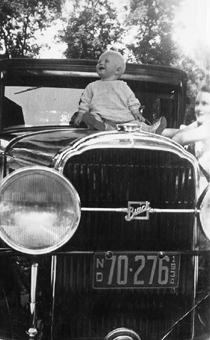
At age one on our neighbors Buick.
I tell people that I was born in the Happy Dragon Chinese restaurant. Ive always thought it fitting that the hospital I was born in turned into a Chinese restaurant later on.
Even my first memory now seems to me mysterious and evanescent: the smell of coal smoke and the look of the small squares of the sidewalk. This was near the train depot in Grand Forks, North Dakota, an old station from the 1920s.
Perhaps being born in a future Chinese restaurant brought me luck because I barely survived infancy. When I was little we lived in an old rooming house in Grand Forks that had an open atrium in the center. One day I was in a baby stroller; my mother and godmother were standing talking at the top of two flights of stairs when somehow the stroller rolled away from them and began crashing down the stairs. I went head over heels down two flights. My head just missed the floor and I ended up hitting the glass door at the bottom. I vividly remember my mother screaming in horror as she watched me tumble down the stairs.
In Grand Forks my babysitter was a gangly teenage girl who we thought was the sister of my mothers best friendbut really she was her illegitimate daughter. Her mother worked at a dairy, and she often took me there. I remember her reaching into a big churn they had there to give me a huge chunk of vanilla ice cream.
We were a nomadic family, living in a half-dozen places in North Dakota, Minnesota, and Ohio. I attended seven schools by the time I was twelve. When I was in first grade we left Grand Forks and moved to Atwater, Minnesota, a small town a hundred miles west of Minneapolis. Thats where my fathers parents had a farm. I stayed with them for a time while my parents were trying to find a place to live.
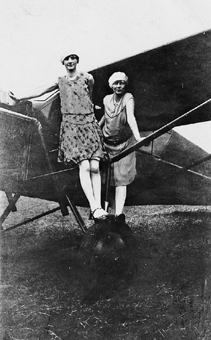
My mother, on the right, with a friend on a Curtiss Robin that she flew, ca. 1931. It was probably owned by her instructor.
Grandfather Rosenquist had a quarter section, which was something like five hundred acres, on which he grew wheat, corn, and soybeans. He also had twenty dairy cows. Hed get up before dawn, take a nap at noon, and then go work until suppertime. Hed stay up until ten, listen to the news on the radio, and go to bed. Even after I moved back with my parents I went out to the farm and fed the pigs. I used to make them pig cocktails. You would take a big barrel of water and put in so many shovels of wheat, and then add barleycorn to make it a little sweeter. My grandfather lived to age ninety-twohe could have lived longer but he got gangrene in his heel; they wanted to cut it out but he wouldnt let them. Well, I came into this world with two feet, he told them, and Im going out with two feet.


